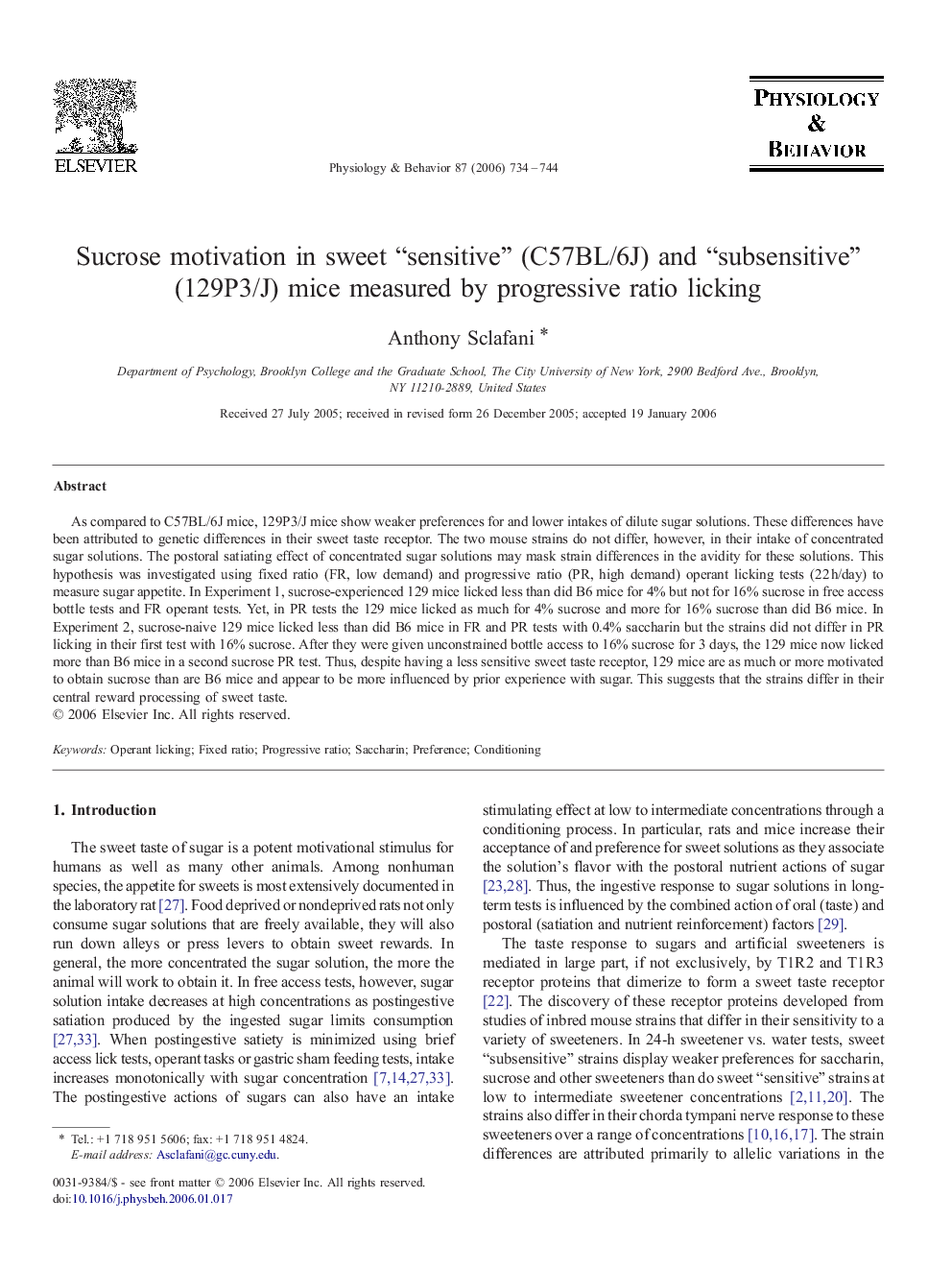| Article ID | Journal | Published Year | Pages | File Type |
|---|---|---|---|---|
| 2846312 | Physiology & Behavior | 2006 | 11 Pages |
As compared to C57BL/6J mice, 129P3/J mice show weaker preferences for and lower intakes of dilute sugar solutions. These differences have been attributed to genetic differences in their sweet taste receptor. The two mouse strains do not differ, however, in their intake of concentrated sugar solutions. The postoral satiating effect of concentrated sugar solutions may mask strain differences in the avidity for these solutions. This hypothesis was investigated using fixed ratio (FR, low demand) and progressive ratio (PR, high demand) operant licking tests (22 h/day) to measure sugar appetite. In Experiment 1, sucrose-experienced 129 mice licked less than did B6 mice for 4% but not for 16% sucrose in free access bottle tests and FR operant tests. Yet, in PR tests the 129 mice licked as much for 4% sucrose and more for 16% sucrose than did B6 mice. In Experiment 2, sucrose-naive 129 mice licked less than did B6 mice in FR and PR tests with 0.4% saccharin but the strains did not differ in PR licking in their first test with 16% sucrose. After they were given unconstrained bottle access to 16% sucrose for 3 days, the 129 mice now licked more than B6 mice in a second sucrose PR test. Thus, despite having a less sensitive sweet taste receptor, 129 mice are as much or more motivated to obtain sucrose than are B6 mice and appear to be more influenced by prior experience with sugar. This suggests that the strains differ in their central reward processing of sweet taste.
